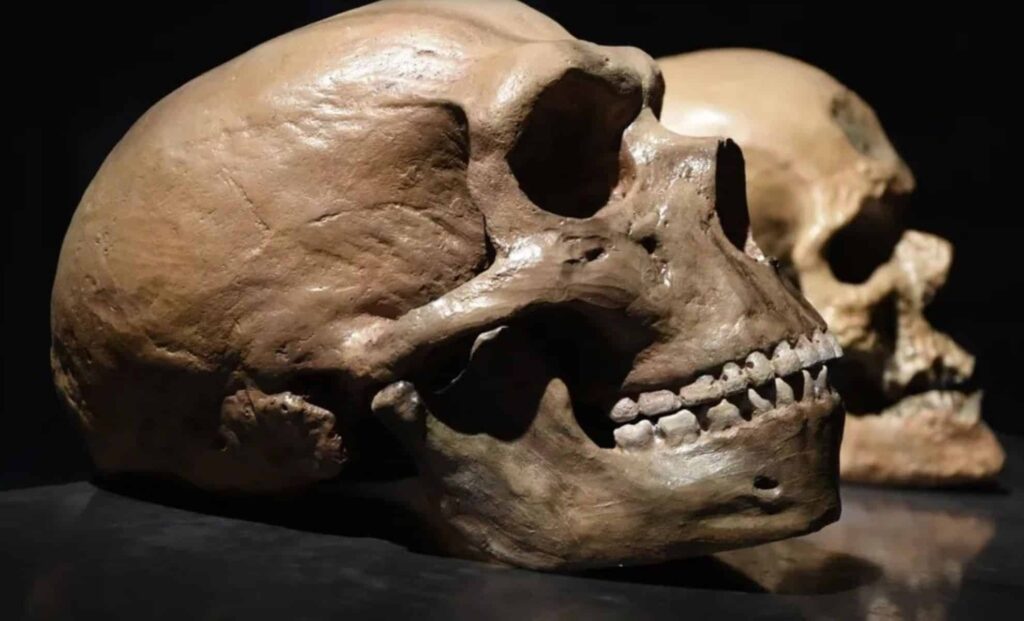
A breakthrough in human evolutionary research has unveiled the location where Homo sapiens and Neanderthals first crossed paths. Contrary to previous beliefs, this historic meeting occurred not in the caves of Europe, but high in the Zagros Mountains—a remote and pivotal region at the intersection of modern-day Iran, Iraq, and Turkey.
For centuries, the exact location of this encounter remained a mystery. However, a groundbreaking genetic and archaeological study published in the journal Nature has now provided a clearer picture of our shared evolutionary history.
The Zagros Mountains: A Crossroads for Ancient Humans
The Zagros Mountains stretch across a vast expanse of land, forming a natural barrier between the cooler northern regions and the warmer climates to the south. This mountainous range, often overlooked by the general public, served as an essential corridor for human migration during the Pleistocene era, between 60,000 and 40,000 years ago.
As climatic conditions shifted, early human populations migrated across the region in response to changing environments. Neanderthals, already well-established in Europe and Western Asia, began moving southeast. Meanwhile, Homo sapiens, emerging from Africa, continued their northward expansion. In the harsh terrain of the Zagros, the paths of these two species intersected, marking a critical point in human evolutionary history.
Genetic Traces of an Ancient Legacy
It was not merely a passing encounter; the two species likely interbred. Modern genetic analyses confirm that between 1% and 4% of the DNA of every non-African human today is derived from Neanderthals. The significance of this genetic overlap cannot be understated.
This ancient hybridization has shaped much of our biology, influencing our immune system, sensitivity to pain, and even how we respond to COVID-19.
Neanderthal DNA is present in key genetic markers that play roles in disease susceptibility and other physical traits. This is no longer a hypothesis but a fundamental aspect of the modern human genome.
A Meeting Ground for Two Human Species
This new study challenges long-held assumptions about the separation between the two species. Rather than evolving in isolation, Homo sapiens and Neanderthals shared a more complex and intertwined history. The Zagros Mountains, far from being just a backdrop to this interaction, acted as a central hub for genetic exchange.
Archaeologists have uncovered numerous ancient sites in the region, revealing evidence that these two groups did not simply coexist, but intermingled. The findings suggest multiple waves of contact and reproduction, resulting in an exchange that contributed to the genetic makeup of all humans today.
Climate and Geography: Key Players in Human Evolution
The Zagros Mountains were more than just a place where two species met. The region’s geography and climate played a significant role in facilitating the interaction. During the Pleistocene, the area offered a blend of environmental conditions that were suitable for both species.
The topography of the region, with its varied landscapes and elevation changes, provided a diversity of habitats. This allowed Neanderthals and Homo sapiens to not only coexist but to thrive in the same environment. Additionally, the climate played a crucial role in shaping their migration patterns, guiding both groups to the mountains as they moved in response to changing global weather patterns.
These findings are not only groundbreaking for the field of paleontology but also offer a fresh perspective on the role of climate and geography in shaping the distribution and interactions of ancient human species. The Zagros region, once thought of as a marginal area, is now recognized as a central point of convergence in the early history of humankind.
As research continues, the implications of this discovery could further illuminate the complex tapestry of human evolution, offering insights into how our ancestors adapted and thrived in diverse environments. The Zagros Mountains may hold more secrets yet to be uncovered, promising to enrich our understanding of human history.





